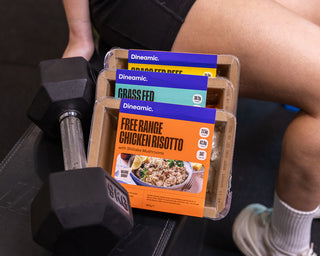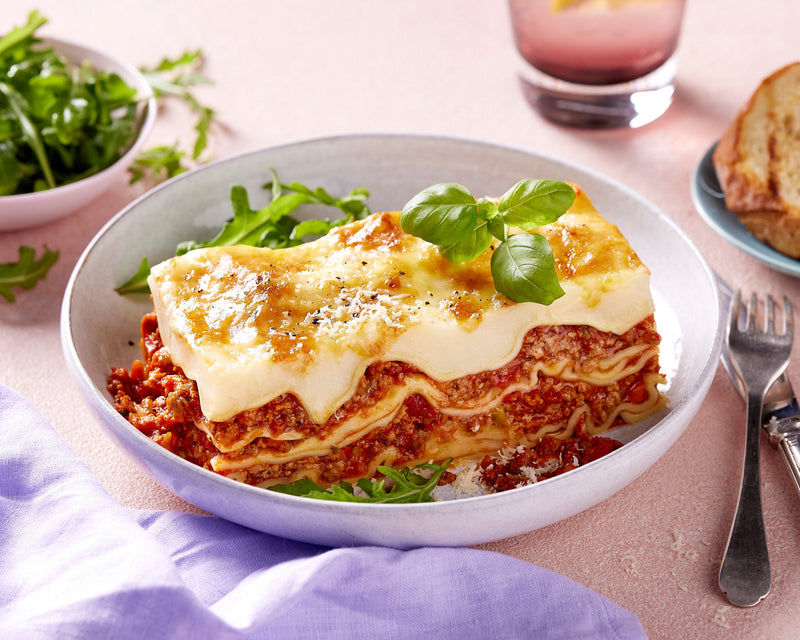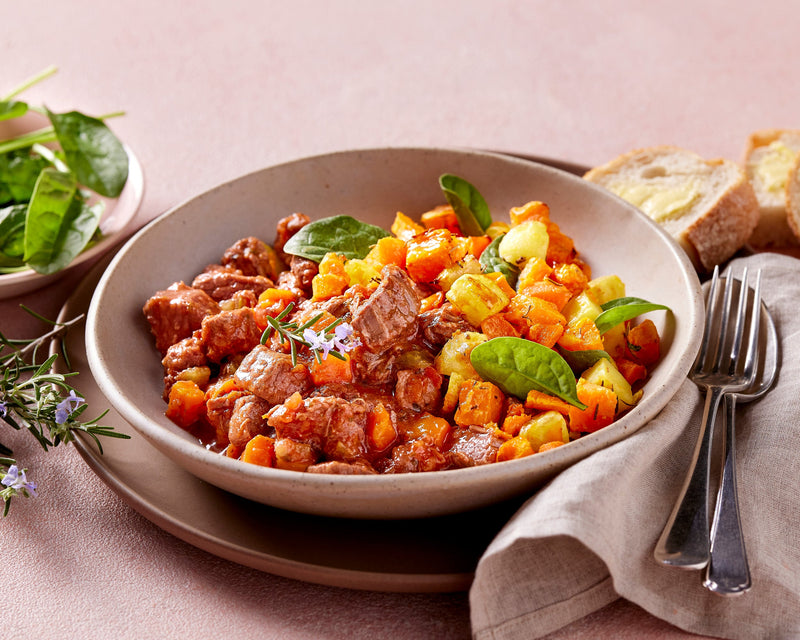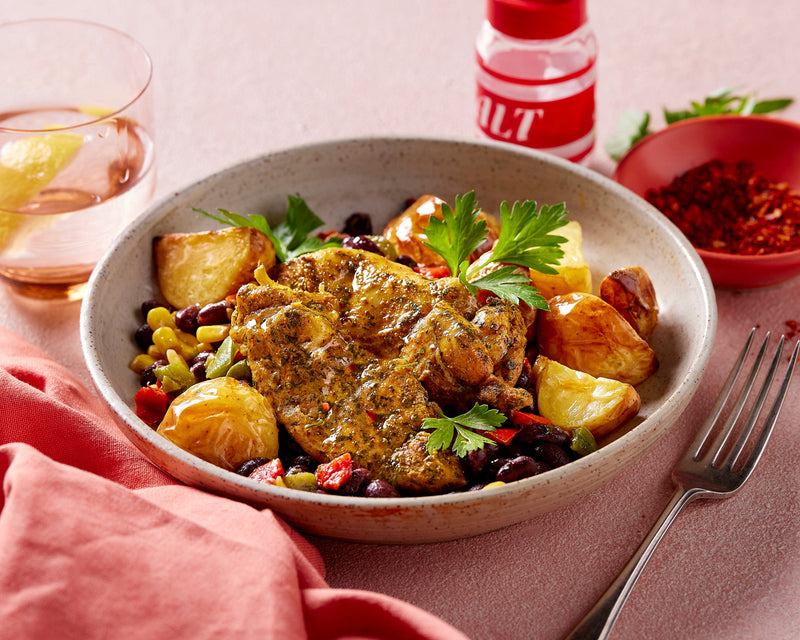
We’re raising awareness about the importance of heart health and what you can do at home to maintain it!
Let’s get the nitty gritty out of the way- cardiovascular disease (CVD) is a term used when referring to stroke, and heart and blood vessel diseases.1 CVD is one of the most prevalent diseases in Australia and is responsible for 26% of Australian deaths. The good news is that prevalence has been decreasing over time (approx. 80% since the 1980s) and there is plenty of research regarding risk factors, medications, and interventions.1
Two things that has been proven to be beneficial for the heart is a balanced diet and regular exercise! This is pretty much common knowledge but let’s discuss WHY eating healthy food and moving our bodies can do so much good for us and our hearts.
By incorporating a wide variety of foods into your diet, you are consuming all the vitamins, minerals, antioxidants, and nutrients that are great not only for the heart but your overall health.2 If you don’t know where to start, just try eating from all 5 food groups in the recommended amounts.3 These 5 food groups include vegetables and legumes or beans; fruit; wholegrains; dairy; and lean meat poultry and fish. A helpful reference point is portioning your plate with ¼ protein, ¼ carbohydrates and ½ vegetables.4
Five Foods Important for Heart Health
Oily fish eg mackerel, sardines, tuna and salmon. These contain omega-3 fatty acids which are known to help normalize heart function, manage blood pressure, and blood triglyceride levels- you can find more info here. 5
Leafy green vegetables eg. spinach, kale and collard greens. These are a great source of micronutrients and antioxidants, specifically Vitamin K and nitrates. This can help reduce blood pressure and improve arterial function6
Berries eg strawberries, blueberries, raspberries. Whilst we love consuming a variety of all fruit, berries are PACKED with antioxidants which are proven to reduce multiple risk factors for heart disease7
Edamame is rich in soy isoflavones which can help lower cholesterol levels leading to an overall decreased risk of CVD8
Oats contain several components that are beneficial to our health. There are a heap of different varieties of this type of grain so it’s hard to pick and choose. We suggest getting your hands on oat groats, steel-cut or rolled oats as they undergo less processing and are more “whole” than the instant oats you find in the sachets. Studies show that wholegrain oats can help lower blood cholesterol thanks to the power of soluble fibre9
The Heart Foundation state that regular physical activity is one of the best things you do for your heart. The recommended amount is 30-45 mins at least 5 times per week. It’s known to have long-lasting effects such as help manage weight, blood pressure, cholesterol and blood glucose and improve blood circulation and overall muscle strength. You’ll also be reaping the benefits almost immediately through your mental health, increased energy levels and a more positive self-image.10
All these benefits come from a few things including how exercise’s ability to work like a bet blocker. Meaning it helps slow the heart which results in lowering blood pressure as well as helping to reduce those nasty stress hormones that put an extra burden on the heart.11 Essentially, the heart is a muscle (yep just like the Gang Of Youths’ song- absolute tune!) and each time you exercise, the ability to pull oxygen out of the blood improves and reduces the need to pump more blood to those hard-working muscles. If you want to learn more, feel free to check out the British Heart Foundation’s YouTube video which talks about what happens inside your body when you exercise.
Five Ways To Move Your Body For Cardiovascular Health
Skipping is a full-body workout that, when done regularly, can increase muscular strength and endurance, and boost flexibility, coordination, and bone density. For those who went to primary school in Australia, you may remember Jump Rope for Heart which is a government initiative that encourages kids to be active12
Squats and other body-resistance exercises like push ups and chin ups. Aerobic exercise can help raise HDL (good) cholesterol levels and lower LDL (bad) cholesterol levels10
Yoga and other flexibility workouts help prevent any pain caused by exercise which then encourages you to do more of it! It helps improve flexibility and balance as well as being beneficial for mental health10
Walking is a cheap and easy way to strength your heart. The quicker you go- the better! You don’t need to be looking like Kath & Kel Knight to get your benefits- you can do it however you please. Pick a good podcast or chuck on the Mamma Mia soundtrack and off you go for 45 mins! Another great way is to meet up with a friend and go together- if the walk doesn’t increase your heartrate surely goss from the weekend will10
Swimming is great for the heart and lungs! This low-impact activity trains the body to use oxygen more efficiently resulting in a reduced resting heart and breathing rate. By using pretty much every muscle in your body, it also improves muscle strength and flexibility. Nothing better than going for a dip on a hot day or even taking the plunge in a heated pool during the cooler months10
When it comes to cardiovascular health, there are some things out of our control such as age and genetics, however there are many factors we can use for prevention such as diet and moving our bodies. Let’s get those hearts pumping and blood flowin to kick off Heart Health Week! It can be as simple as adding some edamame to your stir fry or skipping for 10 mins in the morning- your heart will love you for it 😊
By Kobe Ferteis
References
- org.au. n.d. Key Statistics: Cardiovascular Disease. [online] Available at: <https://www.heartfoundation.org.au/Activities-finding-or-opinion/key-stats-cardiovascular-disease> [Accessed 29 April 2022].
- Buttar, Harpal et al. "Prevention Of Cardiovascular Diseases: Role Of Exercise, Dietary Interventions, Obesity And Smoking Cessation". Clincal Cardiology, vol 10, no. 4, 2005, pp. 229-249., Accessed 29 Apr 2022.
- Healthy eating to protect your heart [Internet]. Heart Foundation. [cited 29 April 2022]. Available from: https://www.eatforhealth.gov.au/food-essentials/five-food-groups
- The Five Food Groups [Internet]. Eat For Health. 2015 [cited 29 April 2022]. Available from: https://www.eatforhealth.gov.au/food-essentials/five-food-groups
- Fish [Internet]. Better Health Channel. 2020 [cited 29 April 2022]. Available from: https://www.betterhealth.vic.gov.au/health/healthyliving/fish
- Van Ballegooijen A, Beulens J. The Role of Vitamin K Status in Cardiovascular Health: Evidence from Observational and Clinical Studies. Current Nutrition Reports. 2017;6(3):197-205
- Basu A, Rhone M, Lyons T. Berries: emerging impact on cardiovascular health. Nutrition Reviews. 2010;68(3):168-177
- Erdman J. Soy Protein and Cardiovascular Disease. Circulation. 2000;102(20):2555-2559.
- Thies F, Masson LF, Boffetta P, Kris-Etherton P. Oats and CVD risk markers: a systematic literature review. British Journal of Nutrition. Cambridge University Press; 2014;112(S2):S19–S30.
- Physical Activity and Exercise [Internet]. Heart Foundation [cited 29 April 2022]. Available from: https://www.heartfoundation.org.au/heart-health-education/physical-activity-and-exercise
- Physical activity - it's important [Internet]. Better Health Channel. 2018 [cited 29 April 2022]. Available from: https://www.betterhealth.vic.gov.au/health/healthyliving/physical-activity-its-important
- Jump Rope For Heart [Internet]. Heart Foundation. [cited 29 April 2022]. Available from: https://www.jumprope.org.au/









